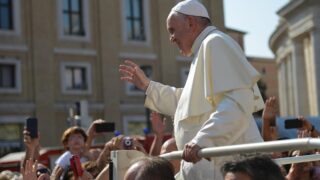James Moore is a professor of Public Policy and Management in the USC Price School of Public Policy, a professor in the USC Viterbi School of Engineering, director of the USC Transportation Engineering Program and a mass transit expert. He says:
- Congestion pricing is a fair way to make drivers pay for the full cost of vehicle impacts on environment, delay, communities and infrastructure.
- Pricing mechanisms force drivers to reckon with the scarcity of space on roads, and ultimately reduce delays.
- Tolls provide new revenue for roads as gas taxes rise and public policies target reduction of fossil fuel combustion.
“I’m surprised it’s taken this long to seriously consider congestion pricing. Economists have argued for decades that it’s the only way to make sure the full costs of a vehicle trip are paid by the person who takes the trip and benefits from it. Tolls might seem like a source of political terror because voters think pricing is a threat to wealth, but it’s the only way we’re going to reduce congestion. I am very hopeful it can happen here in L.A.,” Moore said.
Contact: jmoore@usc.edu or (213) 663-8146
Ed Avol is a professor of Clinical Medicine in the Department of Preventive Medicine at the Keck School of Medicine of USC. He is an expert on respiratory health, air pollution and the public health impacts of traffic. He says:
Reducing traffic is important as tailpipes produce much of the air pollution in the L.A. region.
Cars are much cleaner today, but traffic adjacent to residences built beside highways pose health risks.
Environmental and public health issues must be included in the conversation over congestion pricing.
“L.A. is a car culture and people place great value on their cars. If you charge people, you could discourage traffic so you get fewer cars and fewer emissions, so there might well be benefits to air quality,” Avol said.
Contact: avol@usc.edu or (323) 442-1090
Shahed Rowshan is a lecturer at the Department of Civil and Environmental Engineering at the USC Viterbi School of Engineering, a private consultant and an expert in transportation engineering. He says:
- Congestion pricing is a favorable solution due to limits of other mobility options.
- Expanding highways, or building new ones, is not feasible in big U.S. cities due to exorbitant cost, right-of-way limitations and environmental concerns.
- Cities need to get single-occupant vehicles off the roads and encourage carpooling, mass transit and ridesharing.
- Tolling models aim to discourage single-occupant travelers from using the tollway and provide better mobility with fewer vehicles on the road.
“In the United States, the culture is one person per car, so travelers aren’t interested in using transit or carpooling. Gasoline prices are low, so people use their cars more and purchase bigger trucks and SUVs. The result is limited mobility and harm to the environment. It’s time to take transit and congestion pricing more seriously,” Rowshan said.
Contact: srowshan@usc.edu or (310) 995-5025






